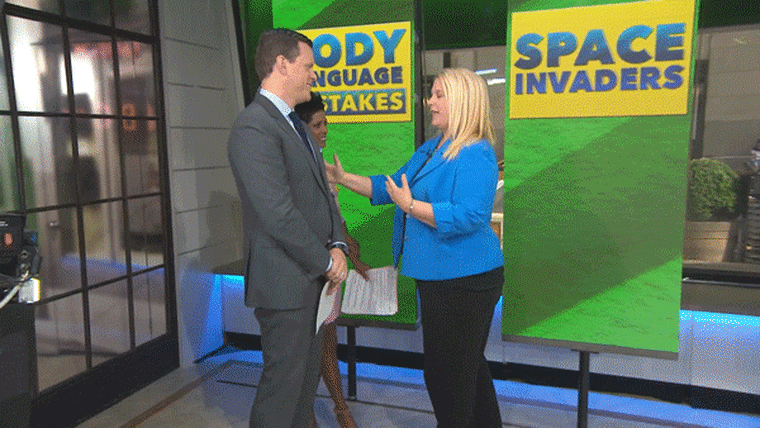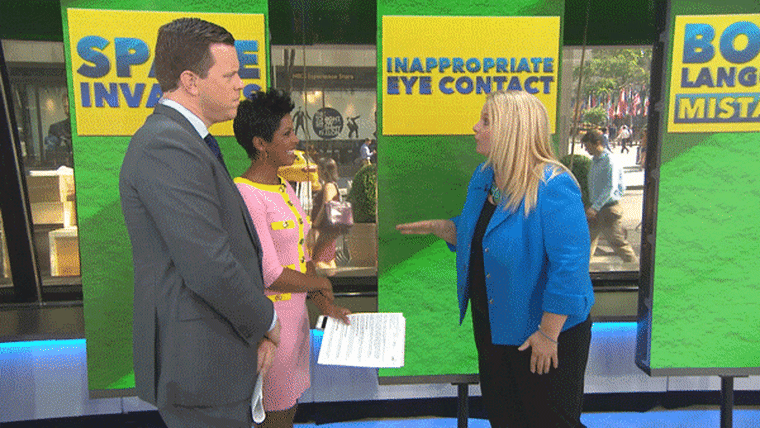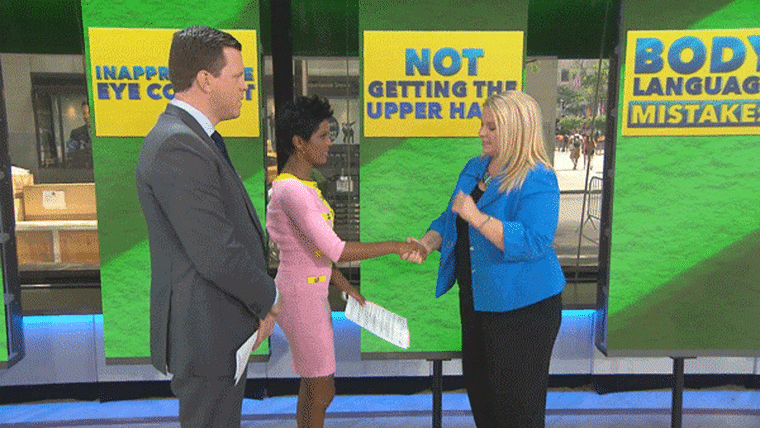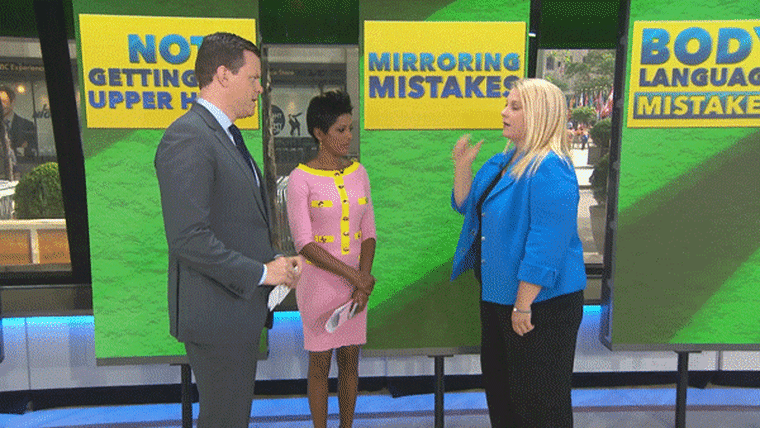Besides charm and smarts, successful people have a skill that’s crucial to getting ahead and getting along: a good understanding of body language.
It’s not always what you say — but the subtle cues you send and pick up on that lead to a good first impression.
“Successful people have been taught this and they have a good vibe of self-awareness,” body language expert Janine Driver told TODAY’s Tamron Hall and Willie Geist on Thursday.
You can learn this important skill, too.
Little changes can bring big results. Sign up for our One Small Thing newsletter here
Here are four common body language mistakes great business leaders and politicians know to avoid:
1. Close talking/space invading

Successful people know exactly when to come close to someone and when to create space. Keep these guidelines in mind:
• 0 to 18 inches is the intimate zone: Use for embracing, touching and whispering
A good rule of thumb for when you’re talking to people other than intimate loved ones: Put your hand in front of you and if you touch someone, you’re too close.
“Unsuccessful people, they think they’re doing you a favor when they’re up close, but they’re actually breaking rapport,” Driver said.
• 18 inches to 4 feet is personal space: Use for interacting with good friends and family.
• 4 to 12 feet should be used in social situations: Use for interactions among acquaintances, coworkers.
Related: Send the right message with these body language tips
2. Inappropriate eye contact

Successful people understand the importance of eye contact because they know it can reveal what both you and they are feeling or thinking.
In the U.S., the appropriate amount is about 60 percent eye contact — that is, looking into someone’s eyes about two-thirds of the time, and looking away the rest of the time. Anything more than that is intimidating. That's why police officers, lawyers, or moms might use 80 percent eye contact —to put you on notice.
“If I want to intimidate you, I’m not going to break eye contact,” Driver said.
Where to look is also important.
In a business setting, think of proper eye contact as falling within the upside down triangle on someone’s face: from eyebrow to eyebrow to the nose and back to the eyebrows. Stray even just a little from that area with your eyes, and you may look disinterested or disrespectful.
“If I look at your lips, it’s sexual. If I look at your forehead, I’m talking down to you — it says 'I don’t care what you’re saying to me right now' just by simply changing where we look,” Driver noted.
Related: How to read and respond to uncomfortable body language
3. Hand shakes without the upper hand

In the traditional handshake, the thumbs are facing up for both parties. But some people will perform a dominant “palm down gesture,” placing their hand on top of your hand so that the thumbs are facing the horizon and your palm is up.
“(They) literally have the upper hand,” Driver said. If you were to do this, “you’ve put me in a beggar’s pose… you’re dominating me.”
If someone has used the dominant gesture on you, you can respond in two ways:
Stroke the ego of the person with the upper hand by saying, "I've heard many powerful things about you" or something similar.
Do a “hand tug” to take back the power. Put your left hand on top of the pile of right hands. This way, you end up with the upper hand.
Related: When it comes to career advancement, body language counts
4. Too-obvious mirroring

People usually like people who are like themselves. Soccer moms like other soccer moms, for instance, and people who enjoy sports enjoy the company of other sports fans, Driver noted.
If you don’t immediately have something in common with someone, you can mirror that person — mimic his or her body language, posture or tone of voice — to unconsciously expedite rapport. But people who don’t know what they’re doing will be too obvious about it, matching the behavior too quickly.
“It comes across as phony and fake,” Driver said. Instead, wait about three seconds before you mirror the other person.
Successful people know having a better rapport means you can better express your thoughts and ideas to others, and those people will be more likely to find you relatable.